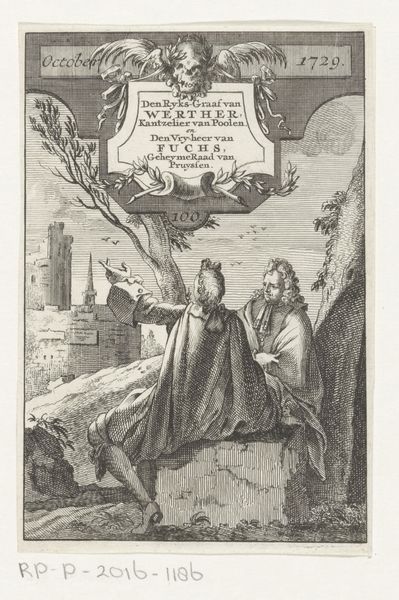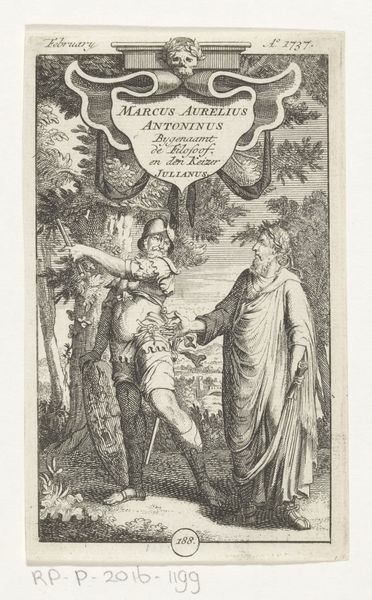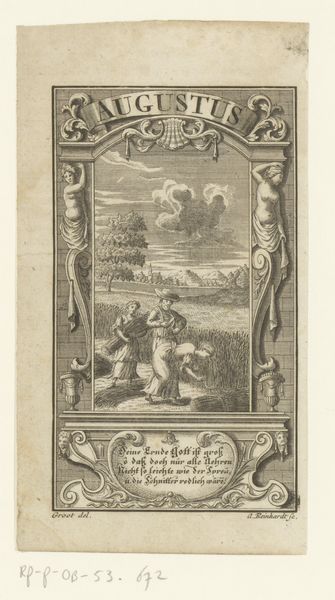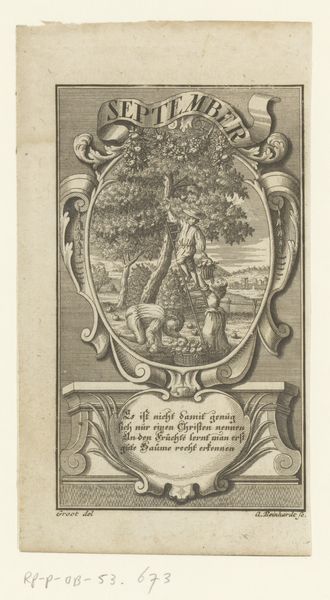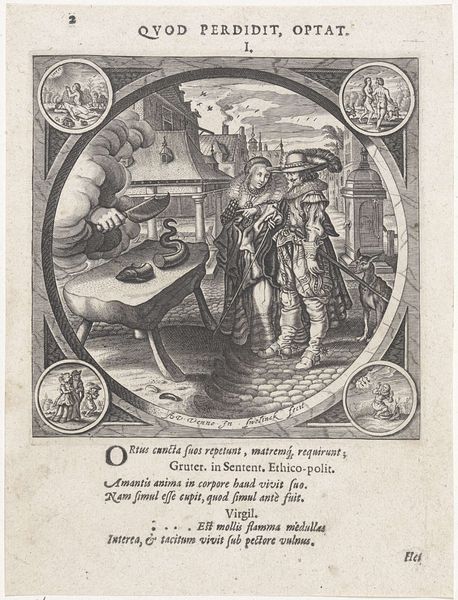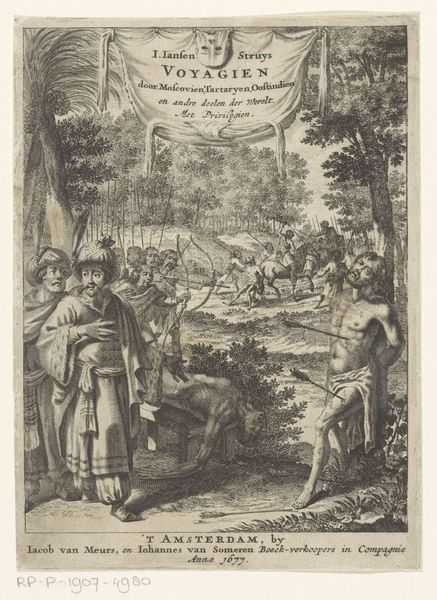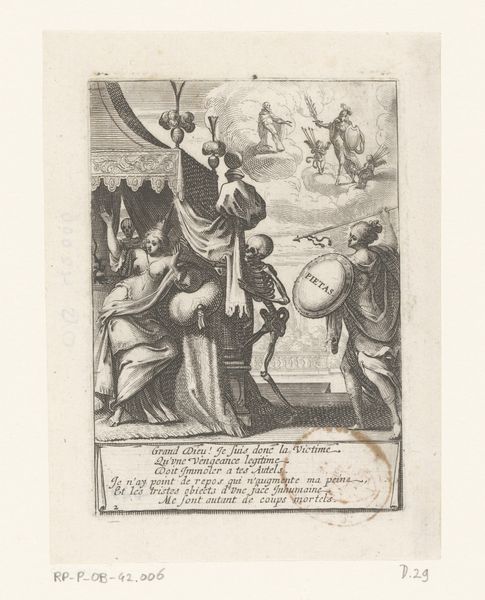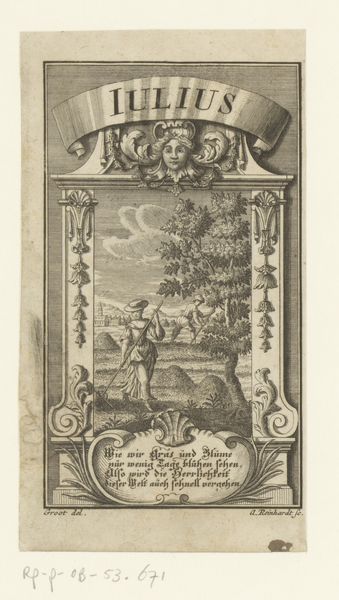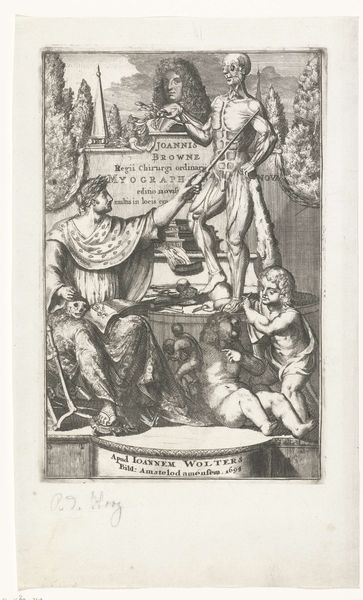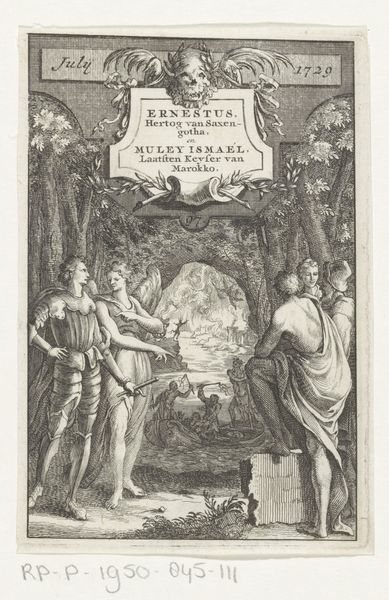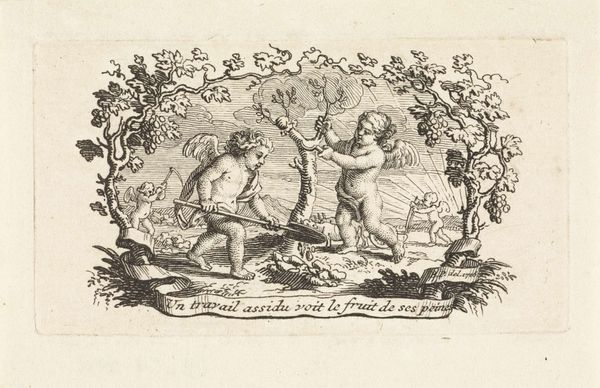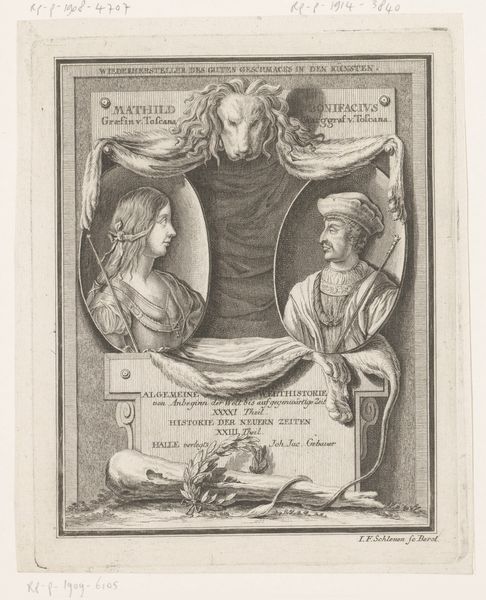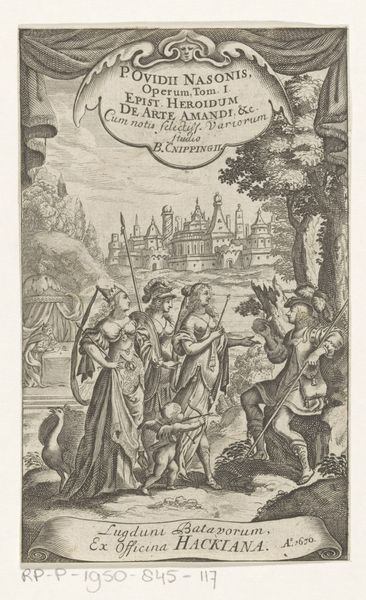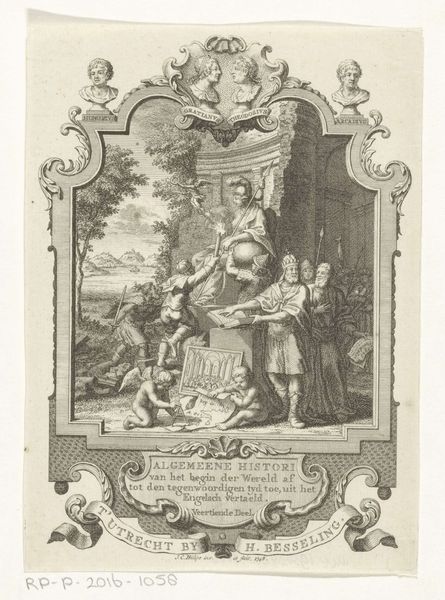
Gesprek tussen keizer Theodosius I en Johan Willem, hertog van Saksen-Eisenach 1737
0:00
0:00
anonymous
Rijksmuseum
engraving
#
portrait
#
baroque
#
old engraving style
#
figuration
#
personal sketchbook
#
history-painting
#
engraving
Dimensions: height 134 mm, width 79 mm
Copyright: Rijks Museum: Open Domain
Curator: Let’s examine this engraving from 1737, entitled "Gesprek tussen keizer Theodosius I en Johan Willem, hertog van Saksen-Eisenach," held here at the Rijksmuseum. Editor: The immediate impression is one of carefully rendered contrasts—the stippling technique provides tonal gradients, while the composition seems to compartmentalize foreground and background, almost like a theatrical set. It feels… staged, rather than spontaneous. Curator: Yes, the artist's organization of the image field demonstrates deliberate choices. Note the ornamental cartouche at the top, framing the text, almost severing the scene below from any atmospheric depth. Also consider how the orthogonals converge rather artificially to the center of the composition. Editor: The interplay between the figures themselves speaks volumes. Theodosius, on the left, in Roman garb, extends his hand—an obvious gesture, perhaps of offering, of authority even. What narratives lie enmeshed in the presentation of these two men, Emperor Theodosius I, who reigned in the late 4th century, and Johan Willem, Duke of Saxe-Eisenach? Curator: I agree with the symbolic weight of the gestures, particularly how the garments themselves mark distinctions between ruler and subject. Beyond their garb, the visual elements guide the eye vertically, up the figure of Willem toward a space of light just above him. This simple effect uses light to suggest both hierarchy and the Duke’s aspiration. Editor: But observe also the skull within the decorative top section—the vanitas, so ever-present in Baroque art. Is its purpose here solely memento mori? It seems a visual commentary, both about the futility of earthly power as well as the promise of religious life. Curator: An astute reading, to be sure. By placing the skull above the heraldic frame, one could argue that the work attempts to underscore that themes of piety will prevail in all interpretations. The arrangement creates layers of formal and intellectual interpretation. Editor: What lingers most is the cultural conversation embedded here – Rome’s imperial past intertwined with a provincial nobility striving for their time in the sun. Curator: Yes, as an object of visual analysis, the image offers an experience to be mined both on the level of formal structures and symbolic density.
Comments
No comments
Be the first to comment and join the conversation on the ultimate creative platform.
